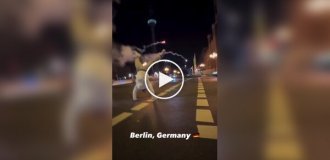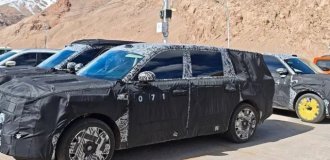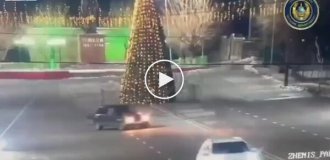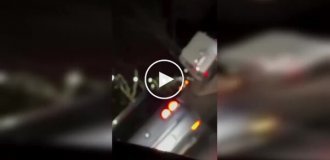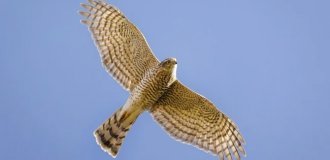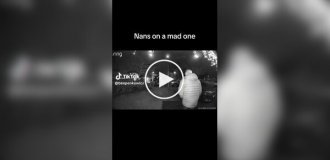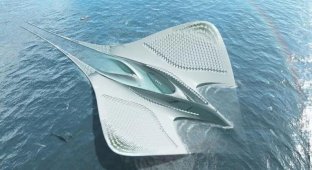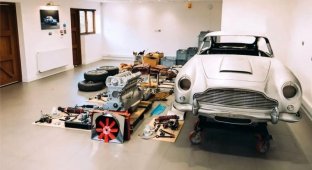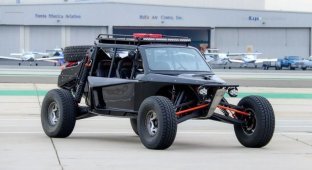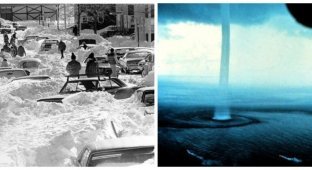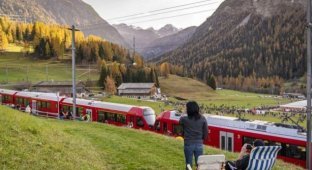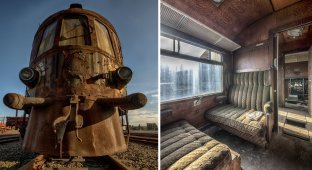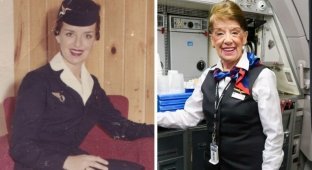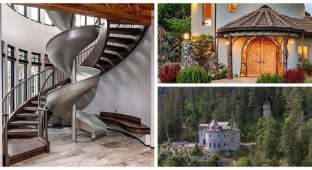DC-3. Plane-epoch (28 photos)
The classic airliner of the entire world aviation Douglas DC-3 to By the end of 1991, it had been in continuous operation for 55 years. 
At the beginning of the 30s. of the last century, the TWA airline was in dire need of a new car for itself.
A few words about this structure. Trans World Airlines (TWA) was founded on July 16, 1930 after the merger of Transcontinental Air Transport (TAT), which in turn was founded in 1928. Clement Case, with Western Air Express.
October 25, 1930, TWA offered the first fully aviation route between the west and east coasts of the United States: Lindbergh Route. He took 36 hours and included an intermediate overnight stay in Kansas City.
In the same year, TWA was on the verge of bankruptcy after The March 31 crash of TWA Flight 599 near Bazaar, Kansas. IN The accident killed all passengers and crew. The reason was the old planes company - Fokker Trimotors. 
The main aircraft manufacturer in the United States at that time was Boeing, but due to contract requirements with United Air Lines, it could not sell its aircraft to competing companies. Therefore TWA turned to other manufacturers with their terms of reference. The plane was supposed to have three engines, be all-metal, with flight range of 1740 km, have a speed of at least 242 km/ h, it must was to take off with one failed engine from any of the airports on main TWA routes, especially from the airport runway Albuquerque, which is at high altitude and has high summer air temperature.
Donald Douglas, head of the Douglas Company, offered his project. TWA accepted his offer with apprehension. Douglas assumed install two motors, not three, as required by the technical specification. True, these two the motors were more powerful than in the three-engine version. TWA decided take a chance, so on September 20, 1932, a contract was signed to build new aircraft for the airline. They became DC-1 (Douglas Commercial). From his competitor Boeing 247, he was distinguished by a high fuselage, which gave the ability for the passenger to move around the cabin in full growth, there was sound and heat insulation, there was a buffet and even a toilet!
July 1, 1933 Karl Carpet lifted the car into the air. First the flight could be the last. Immediately after takeoff while climbing both engines stopped suddenly. After transfer to planning motors started up again. 20 minutes later, to great relief several hundred observers, including Douglas himself, Carpet safely landed the car on a large field adjacent to the plant. Engineers began to find the cause of the failure.
It turned out that the culprit was experimental carburetor with rear float suspension. He cut off fuel supply to the engine as soon as the aircraft went into climb. The carburetors were finalized, and the DS-1 successfully passed the entire five-month flight test program. 
Later, to demonstrate the capabilities of the DC-1, testers drove her along the Albuquerque-Winslow route on one motor from takeoff to landing!
TWA accepted the car on September 15, 1933, but with some changes. So the number of passenger seats was increased to 14, installed more powerful engines.
Only one copy was built. TWA ordered a more advanced model from Douglas - DC-2. 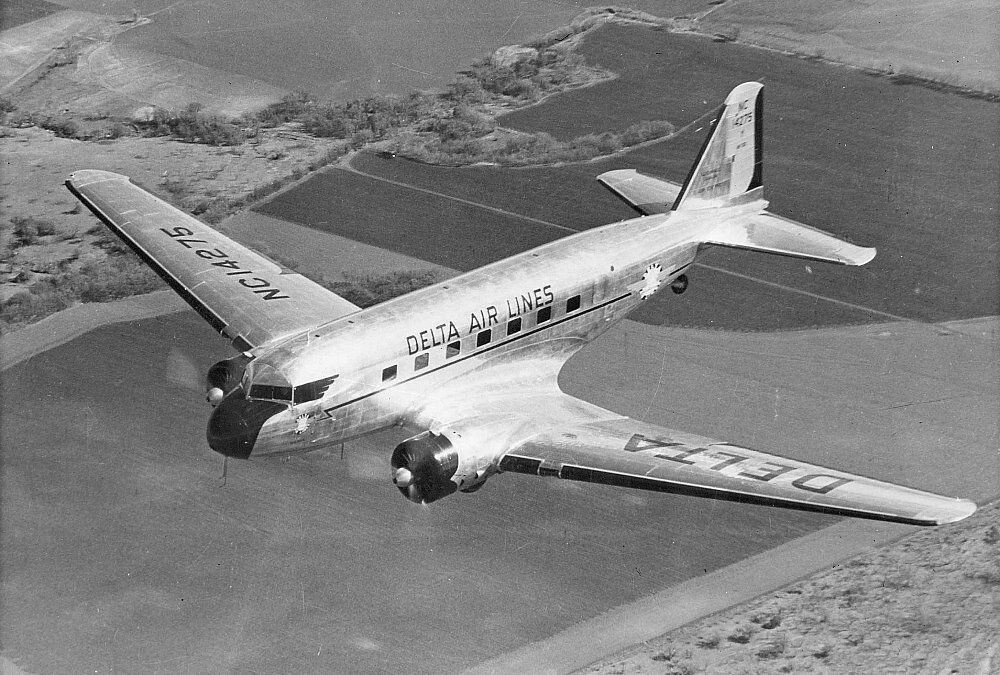
The prototype of this aircraft was remade over a dozen times. Performed new fairings in the junction area of the wing and fuselage, eliminated vibration in the cabin and reduce the noise level. Douglas brought the DC-2 to this perfection that the aircraft has changed all the norms and standards that were presented to American air lines of communication. 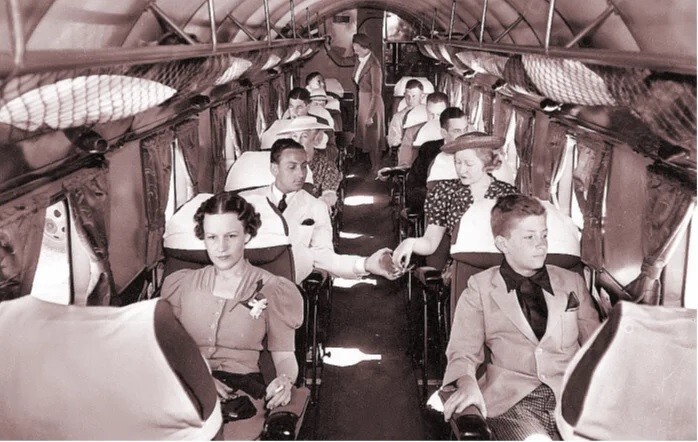
By the middle of 1937, 138 DS-2. Then the planes began to arrive in Europe. They were also sold to Japan and China, and even Italy and Germany acquired for experimental purposes for a couple of cars.
In 1934, Douglas, commissioned by American Airlines began development of a more advanced aircraft - DST - Douglas Sleeper Transport, which was supposed to be intended for flights across the whole the territory of the United States - from ocean to ocean. It was foreseen that 16 passengers during the flight will sleep, so the cabin crashed partitions into sections with bunk beds.
DST took to the skies Dec 17 1935 g in Santa Monica. On his base was made DC-3, designed to carry 28 passengers in chairs of the standard type.
The machine was developed under the direction of Arthur Raymond. 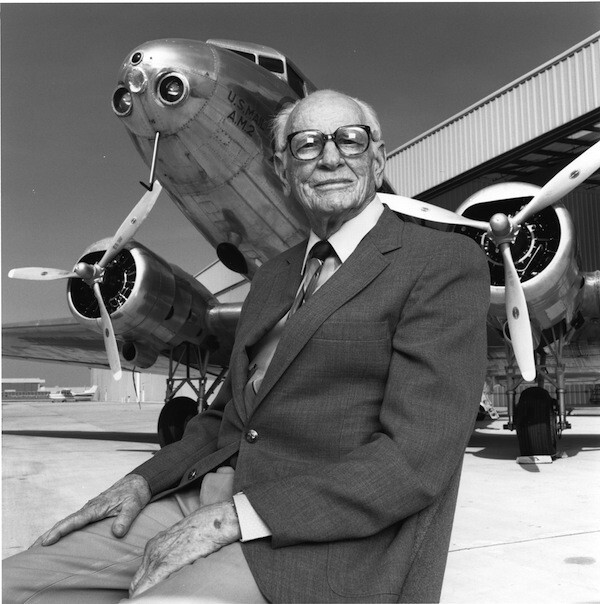
On May 21, 1936, the aircraft received a certificate of airworthiness and began to operate on the New York-Chicago highway.
The efficiency of the new aircraft proved to be to such an extent high, that he literally conquered almost the whole world within two years. TO In 1938, DC-3s performed 95% of all civilian traffic in the United States. Except In addition, it was operated by 30 foreign airlines. 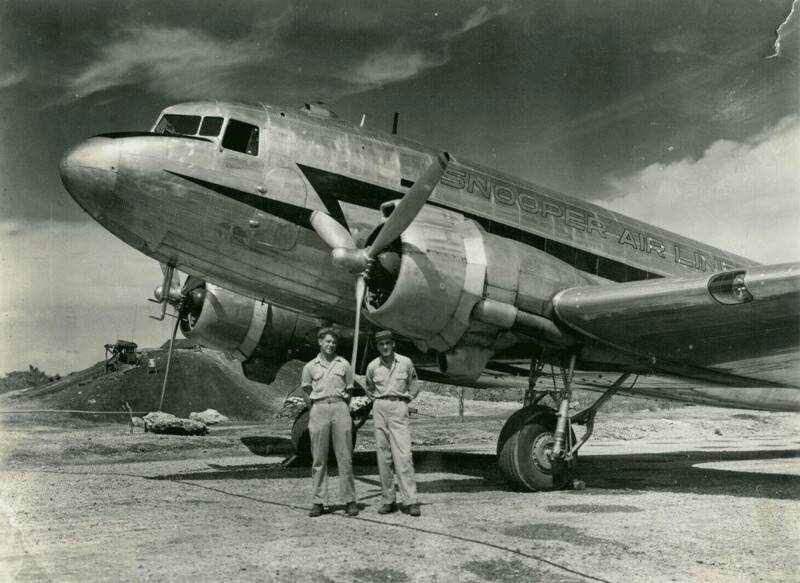
The license for the production of DC-3 was acquired by Holland, Japan and the Soviet Union.
In our country, it was produced under the designation PS-84 (in was later renamed Li-2) in Khimki at aircraft factory No. 84 named after V.P. Chkalov. Compared to the American DC-3, the PS-84 design had some changes have been made to increase its strength, using domestic materials and equipment. With input in the operation of the PS-84 aircraft has significantly increased the economic efficiency of the civil air fleet of the USSR. By June 1941 in our country had 72 cars, and during the war years it was produced about 2000 more cars.
At the same time, the Dutch Fokker was practically engaged in the sale these machines in Europe on behalf of Douglas. A large number of DS-3 sold Poland, Sweden, Romania, Hungary. Even despite the beginning of the second world war, a considerable batch of passenger DC-3 was sent to Europe. 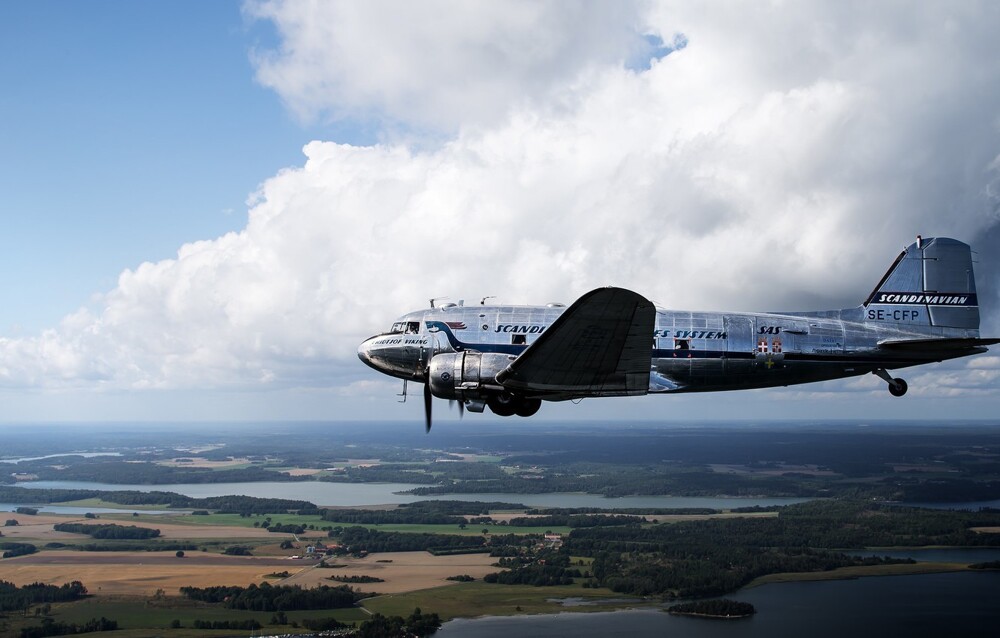
Such popularity has not gone unnoticed in the US Department of Defense.
The first option for the Air Force was the C-41A. From the airliners differed in equipment, instruments, radio equipment and folding seats. The Air Force accepted it into service in September 1939.
The second option for the military was the S-47. They reinforced it glider, increased the wing, mounted a powerful floor for heavy loads - the aircraft was originally intended to be used for transportation. IN a large hatch was cut through the left side of the fuselage. Its dimensions allowed without problems to put the jeep. C-47 was supposed to transport Willys with a trailer or Willys and an anti-tank gun. The maximum load capacity is set at a value of 3000 kg. 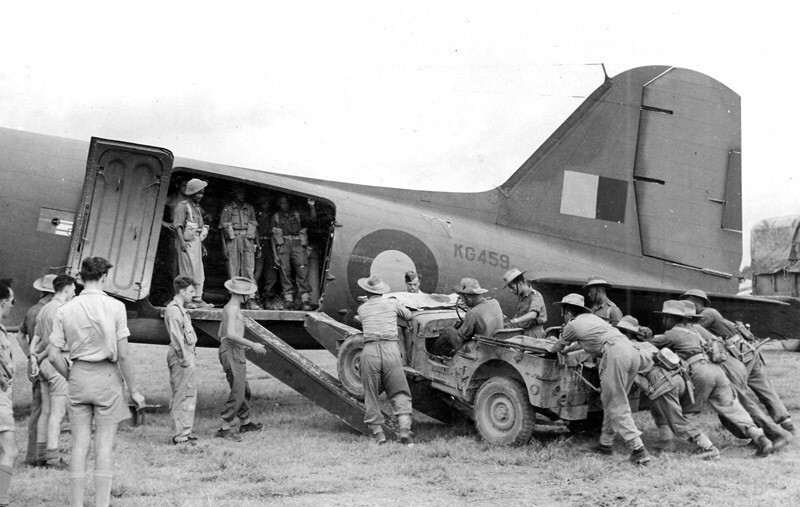
When transporting personnel, 28 folding seats, it was possible to install racks designed for installation of 14 stretchers for the bedridden wounded. 
For the navigator, an astronavigation station was installed above the cockpit. dome. The anti-icing system has evolved from optional to standard.
The first serial S-47 was built at the end of December 1941. The US Air Force, he received his own name - Skytrain - Heavenly train.
The Air Force of the Fleet also became interested in this transporter. Under them needs, a modification of the R4D-1 was created, which differed in equipment and appliances.
It was replaced by the C-47A modification. The main difference was transfer of the on-board power supply from 12 V to 24 V. This is the most massive modification of the S-47. For the needs of the Navy, it was produced under the designation R4D-5.
In parallel with the cargo C-47, the C-53 skytrooper was produced - Skytrooper. He specialized in the transportation of personnel. Externally differed from the S-47 in the absence of a large hatch on the port side, there was no blister at the navigator.
In the Air Force of the Fleet, it was adopted under the designation R4D-3.
The release of the aircraft was completed in March 1947. 10655 aircraft of this family were built. 
The aircraft was massively supplied to all US allies under the program lend-lease. So the S-47s delivered to the Royal Air Force received their own name Dakota. In the USSR, S-47s began to be delivered in the autumn of 1942. In our country, country, he is better known as Douglas. In total, the USSR received 704 such aircraft. In the Soviet Air Force, vehicles of this type were used exclusively like transporters. These planes were flown by a special forces detachment Civil Air Fleet, which performed responsible tasks, for example, transportation the leadership of the country. 
S-47s were quite actively used by the allies during war. They were used in all theaters of war. From July 1942 year they began to operate flights from the US to the UK and from India to China. In the fall of 1942, the Dakotas landedAnglo-American landings in North Africa, transferred the necessary cargo to the troops fighting on the island of Guadalcanal. And when the paratroopers landed on New Guinea all the supply of troops leading the offensive was carried out by air bridge. In the Pacific, C-47s provided combat operations on the Solomons islands and the Philippines. 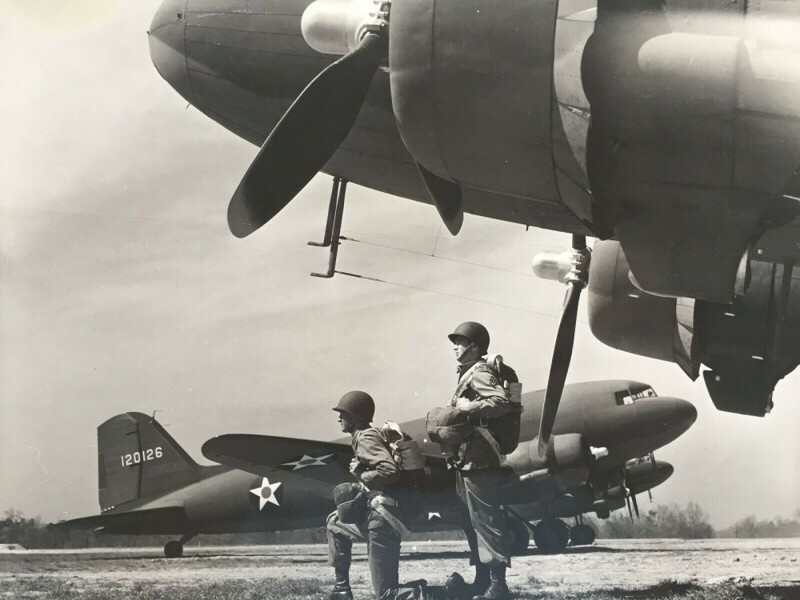
In July 1942, the Allies landed a glider-parachute landing in Sicily, and in June 1944 in Normandy, in August - in South France, in September, units landed from aircraft, capturing islands in the Aegean. The Dakotas also participated in the operation near Arnhem and while crossing the Rhine. At the same time, Allied aircraft provided offensive in the jungles of Burma, where there was simply no other way supplies. The last major airborne operation was carried out British in the area of Burmese Rangoon.
After the end of World War II, thousands of S-47s were sold private and public firms. Over 300 airlines worldwide the world moved to it. And although by the beginning of the fifties DS-3 (S-47) was already considered obsolete, over 6000 of these machines flew around the world.
Moreover, during the Vietnam War, the S-47 reappeared over the battlefield. But this time, in a slightly different way. equipped several machine guns installed in the port side windows, S-47 turned into Gunship - a special anti-guerrilla aircraft. 
Now let's get acquainted with Li-2.
In 1932, Aeroflot appeared in the USSR, which increased freight traffic by 4 times. More aircraft are required for such volumes. WITH for this purpose, the DS-2 was acquired in 1935, and on April 11, 1936 was purchased a license for the production of DS-3. Moreover, in the same year a group of Soviet designers, incl. Myasishchev, Lisunov, Gurevich arrived in the USA to get acquainted with the progressive plasma-template method aircraft production.
In addition to the license, representatives of the Soviet Union concluded a contract for the purchase of a couple of dozen aircraft. Until will launch its own production. In November 1936, the USSR received the first copy of the DC-3.
In 1937, after returning from the United States, Myasishchev was appointed to plant number 84 in Khimki, where the production of DS-3 began to unfold with motors M-62IR with a power of 1000 hp.
Soviet cars differed from their American parent using domestic materials, modified internal layout, but the weight has increased due to the transfer of inch sizes to big side. In addition, equipment and instruments have been simplified. 
On November 7, 1938, the first copy of the licensed aircraft. In 1939, the car passed the State tests and received series launch recommendation. She was given an official designation PS-84 (Passenger aircraft of aircraft factory No. 84). 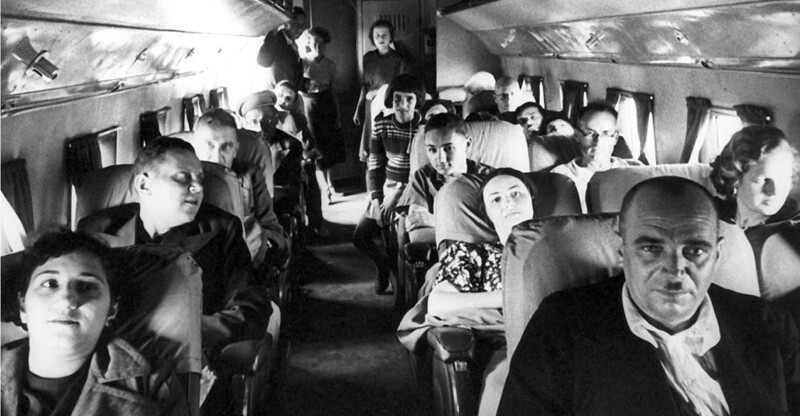
By the beginning of the war, including American and licensed PS-84s, there were about 150 copies in service.
After the outbreak of war, the plant was evacuated to Tashkent.
Even at the beginning of the production of the Air Force of the Red Army, it was required to produce specialized aircraft. Modification for the military received the designation PS-84K and differed from the civilian version in a reinforced floor, wide cargo hatch, the ability to transport 26 paratroopers, 1 ton of bombs per external suspension. Despite the successful testing of the PS-84K, the series did not went.
On September 17, 1942, the aircraft was assigned the designation Li-2 - according to the names of Lisunov, who led the introduction of the aircraft into the series. Should note that until the end of the Great Patriotic War, the name Li-2 applied only to military options and only, then it was assigned and passenger cars.
The release of the Li-2 was completed in 1952. A total of 4937 units were built.
The combat debut of the DS-3 in the USSR took place during the battles on Khalkhin Gol in 1939. On May 29, they were taken to the battlefield 48 the most experienced Soviet pilots. The DS-3s that arrived in Mongolia were engaged in delivery of personnel, cargo, evacuated the wounded.
The first Soviet PS-84s were built in the summer of 1939 and received a baptism of fire in the Soviet-Finnish war. Despite the difficult winter conditions, flights from unprepared sites, the car showed itself very reliable.
After the end of this conflict, PS-84s began to work on civil airlines. 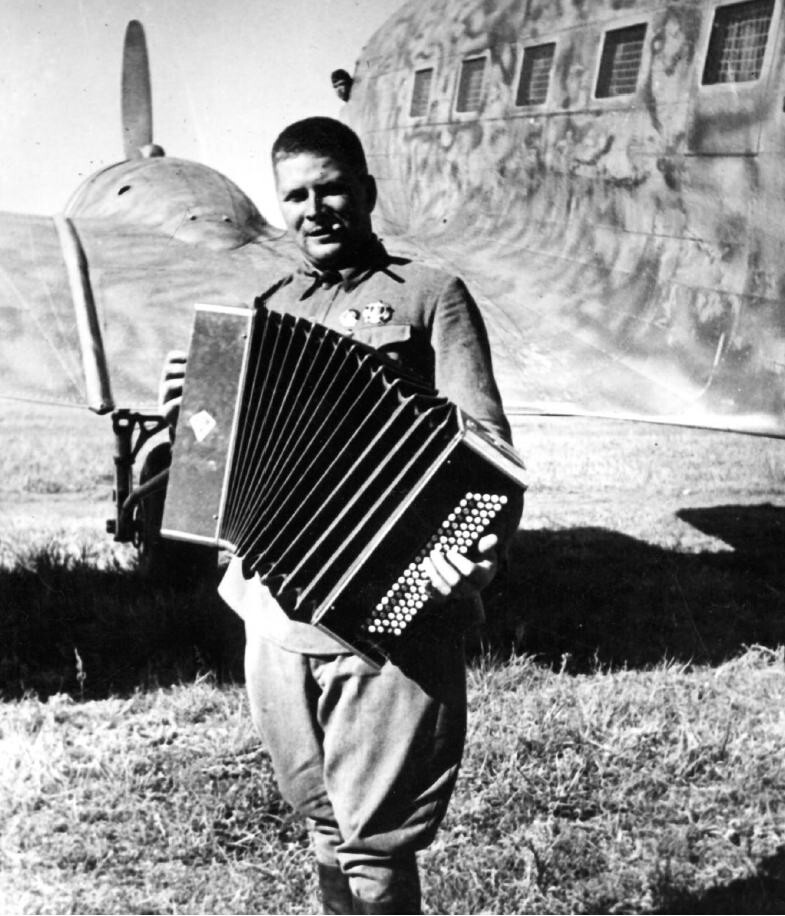
Since the beginning of the Great Patriotic War, all Soviet airliners were combined into special groups of civilth Air Fleet. By the end of July 1941, 68 PS-84 and DS-3. They took an active part in all operations the initial period of the war: flights over the front line, transportation of goods, supply of troops, evacuation of the wounded. Aircraft of this type suffered heavy losses. By the end of 1941, the Germans shot down 44 DS-3 and PS-84 vehicles.
Such heavy losses were due to the lack of defensive weapons.
In the workshops of the MAGON airbase at Vnukovo airport, the process of arming the transporter. Top in the center of the fuselage installed MV-3 turret with a ShKAS machine gun, another one was installed in front of the cockpit. Two machine guns were placed on the sides. 
Since 1942, such a refinement has already become serial.
These transport workers established an air bridge near Leningrad, Sevastopol.
For the entire Great Patriotic War, the ADD held only two strategic operations, and Li-2 took part in both. They passed in 1944, were sent against the allies of Nazi Germany Finland and Hungary and pursued the goal of withdrawing these countries from the war. IN February, 6 massive raids took place on Helsinki, Oulu, Kotka and Turku, and in September 4 raids on Budapest, Derbetsen and Szegeda. These operations are difficult to recognize as successful
The largest casualties are associated with bombing Soviet Li-2, although in general the number of downed Li-2s was significant less than IL-4.
When the Soviet troops began to fight on territories of European countries, the crews of night lamps had to face enemy air defense system equipped with radar. To counter them allocate special aircraft that were scattered before approaching percussion machines tape made of metal foil. Thus, Li-2 can considered one of the first directors of radio interference in the Soviet Air Force. 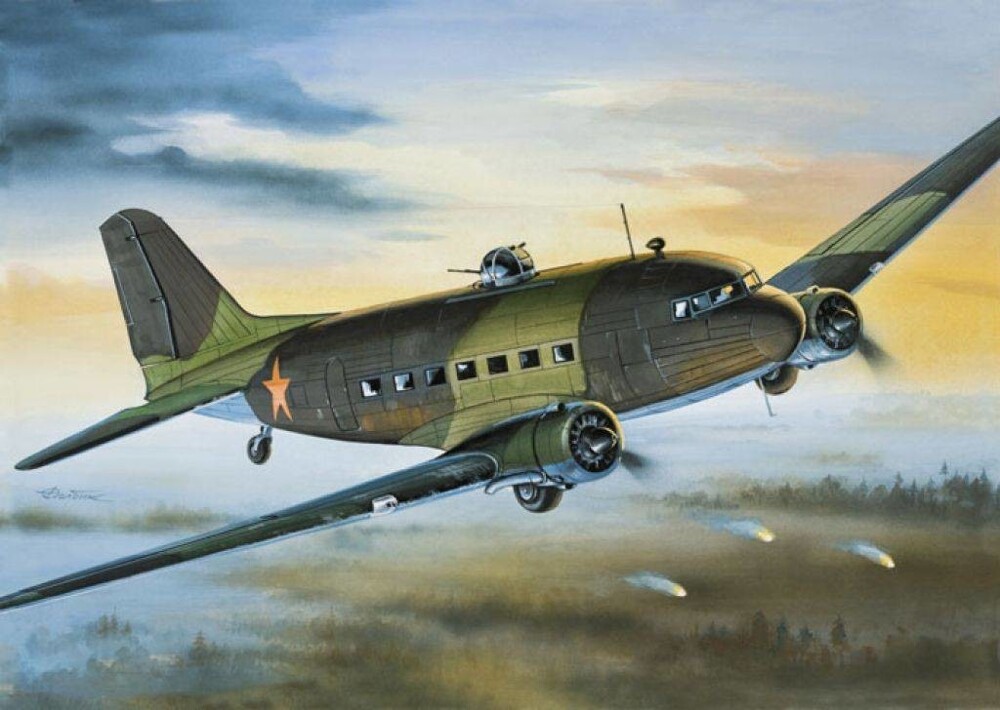
Just before the end of the war, Li-2, which was controlled by the crew 19th separate air regiment of the Civil Air Fleet, headed by A.I. Semenkov, delivered to Berlin representatives of the Soviet government. Back to Moscow on this plane brought the Act of Surrender of Nazi Germany. ending a story about the use of Li-2 in the Great Patriotic War, we emphasize that it can be safely attributed to the best aircraft produced in those years Soviet industry.
Li-2 deserved the highest rating of the crews, possessed almost equal carrying capacity with the main transport carrier of the Luftwaffe Ju-52, but significantly surpassed it in other characteristics.
After the victorious May 1945, three divisions of the 18th VA, armed with Li-2, were transferred to the Far East and took part in war with Japan. The Soviet Union focused on action against The Kwantung Army has a large number of bombers, and needs there was no use of Li-2 for strikes against enemy targets. And here There were many transport problems to be solved. So, given to Zabaikalsky front, the 54th division was engaged in the delivery of fuel and ammunition for the 6th Guards Tank Army, moving through the mountains of Khingan. During that of the war, many tactical airborne assault forces were thrown out, which cut communications, captured important objects behind Japanese lines and held them until the approach of the main forces. Under such a scenario events unfolded in Mukden, Changchun, Port Arthur, Far. And paratroopers captured the last emperor at the Mukden airfield Manzhou-guo from the Qing Dynasty Pu Yi. Even more impressive success was achieved landing under the command of the Deputy Chief of Staff of the 1st Far Eastern Front, Major General G.A. Shelakhov, landed in Harbin. 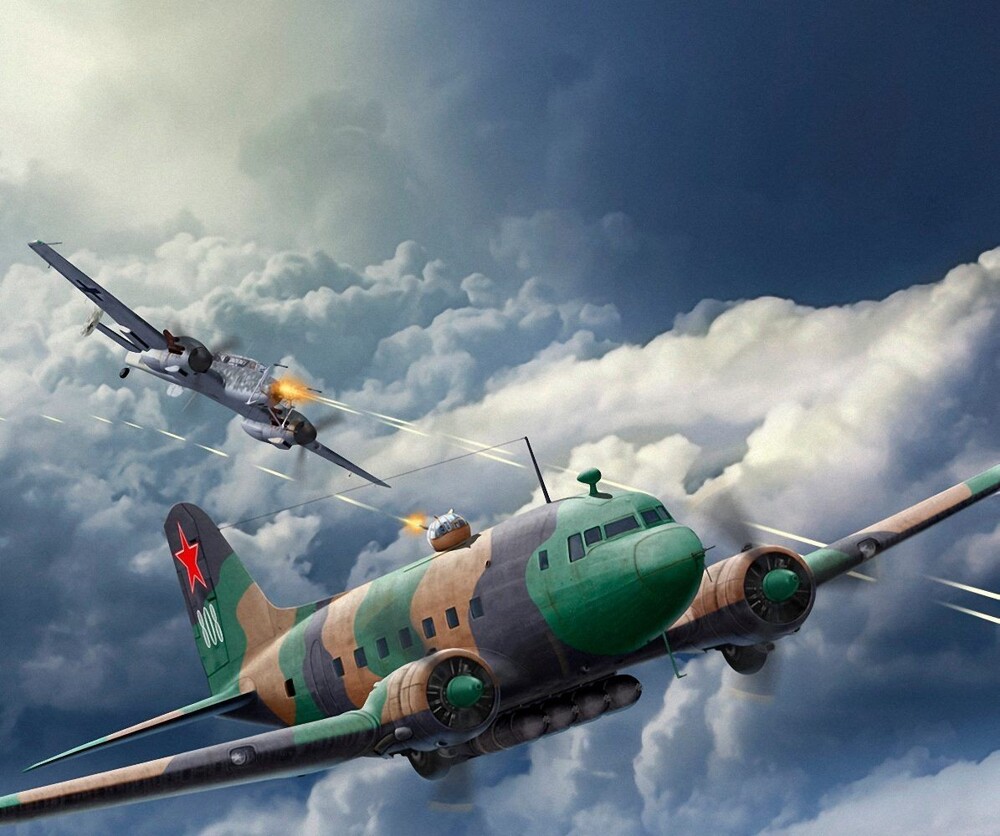
Taking off after the war (in 1946) Il-12 began to displace Honored Veteran of Transport Aviation. With the advent of IL-14 Li-2 began to gradually leave Aeroflot lines. First he got off international routes, and in 1957 began a massive transfer of the car to local airlines. The regular operation of the Li-2 was terminated in 1962, but for at least 10 years this wonderful aircraft worked in auxiliary units of the Civil Air Fleet and DOSAAF. 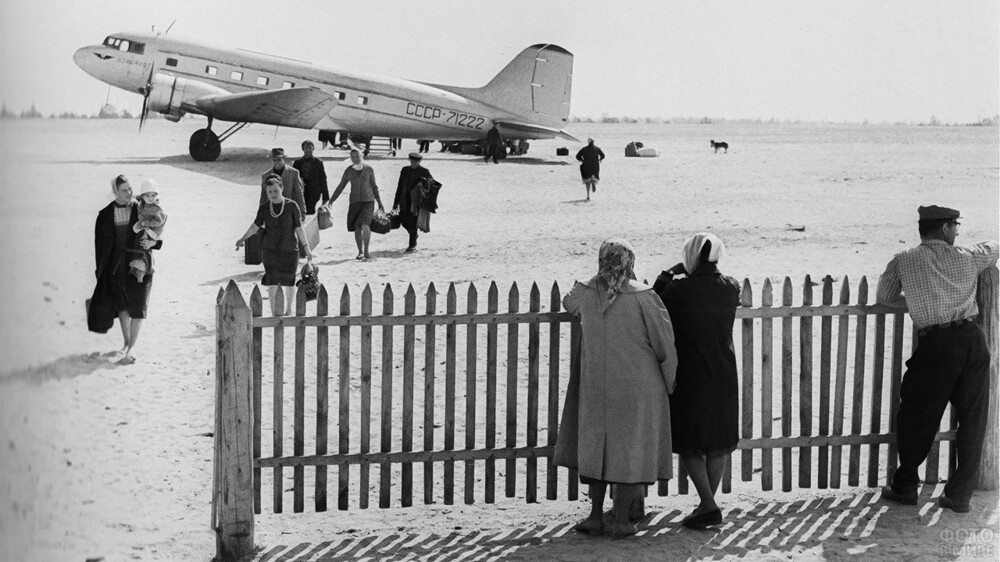
As for the S-47 in the USSR. The first S-47s were used by us to service the Krasnoyarsk highway (AlSib), as it is officially was called by us. They replaced worn-out PS-84s.
In April 1943, these vehicles were brought into a transport squadron, and in June the squadron was deployed to the 8th transport regiment.
The Douglas, along with the Li-2, formed the backbone of our military transport aviation.
A huge amount of cargo was transferred by S-47 under various Offensive Operations CouncilRussian Army. Regiments of the 1st trad provided delivery of urgent cargo during the Battle of Kursk. In February - March 1944, a group of nine S-47s operated near Melitopol trad.
In conditions of mudslides, only aviation made it possible to maintain advance rates. Aircraft brought ammunition, shells, food, shoes and outfit. The wounded were taken out on return flights. They flew close so they did 5 - 6 sorties a day.
Supply operations should be highlighted in a separate line partisan detachments. Of course, the main burden here fell on unpretentious U-2 and R-5, but Li-2 or S-47 could take away the same amount, how many dozen of these biplanes. Therefore, if there are suitable sites (and without them - with dropping cargo on parachutes) "Douglases" at night headed for the German rear.
Transport aviation pilots contributed to the offensive operations in Romania, Poland, Hungary and all the way to Berlin and Prague. Li-2 and S-47s of the 5th Bomber Corps (tank) ALL played a major role in "air bridge" thrown from Ukraine to rebellious Slovakia in 1944. 
I note that the flight and technical staff rated the S-47 higher than the Li-2.
Why?
The American had more powerful engines. They provided more high speed and ceiling, as well as large load capacity. Motors were more successfully mounted and more technologically advanced in maintenance. On replacing the M-62IR with the Li-2 took 62 man-hours, with the S-47 when shooting together with a motor mount only 10. With proper operation of the engine, its resource we produced 1.5-2 times of the guaranteed one. On Li-2 screw VISH-21 had a resource before overhaul of only 50 hours, the American "Standard hydromatic" had a guaranteed resource of 750 hours. Really American the screw worked five times longer than the Soviet one.
A higher culture of production provided more high quality airframe. "American" was more reliable, his outer surfaces provided the best aerodynamic characteristics. Compared to the Li-2, they were much more perfect and fuel and hydraulic systems. Unlike Soviet ones, American cranes do not flowed, thus delivering great pleasure to the mechanics. Freight the C-47 door, which swung open to the sides, was much wider than the hatch with sash rising up on Li-2 (inherited from experienced PS-84K and appeared in the series only in 1945). two soft additional tank of 375 liters, if necessary, located in the cabin, allowed to increase the flight range to 3400 km. And the craftsmen set more capacious non-standard tanks. Flight duration increased to days.
Much more perfect than that of the Li-2, it turned out to be instrumental and radio equipment S-47. The set of instruments was much richer, they were even more accurate, more reliable, had a longer resource. Radio operators Li-2 could only envy, looking at what was on the American machines: three different radio stations, radio altimeter, blind kit landing, automatic radio compass. At the same time, American stations had 5 - 6 times more power, better stability of work and at the same time less weight and dimensions. On S-47, the radio operator's seat was moved out of the zone rotation of propellers and was in a special soundproof wheelhouse. The only, unpleasant fact at the same time: the S-47 was exported with incomplete set of equipment. US Army Air Force provided their vehicles and many others, as evidenced by the empty coasters and unnecessary labels. But even in this form, the S-47 was much superior in this respect and transport aircraft, and bombers of the Soviet Air Force.
On the S-47, the issues of operation were well thought out during low temperatures. American designers have provided everything that existed at that time - de-icers on the wing and plumage, which immediately distinguished the S-47 from the Li-2, washing the propeller blades and pilot windows cabins with alcohol mixtures, calorific heating of the cabin and salon. Pneumatic anti-icers "Goodrich" worked more efficiently than domestic thermal. Higher rated and "wipers" with a hydraulic line compared to electric on Li-2. Calorific heating did not require additional operations when enabled. On Li-2 there was a steam-air water boiler system. The mechanic who served her was called "stoker". He had to tinker a lot to make the "stove" work reliably. Otherwise, this device issued a cloud steam filling the cockpit. 
Li-2 had to warm up for 40 - 45 minutes before takeoff. On Douglas, on the other hand, had a system for diluting the oil with gasoline, which diluted the oil not only in the engine, but also in the propeller bushings. The Americans filled the hydraulic system with a frost-resistant mixture. In frost on S-47 prit was necessary to insulate only the prompter pipes between the motor and oil tank. The S-47 was reliable and economical. According to Soviet statistics, the first half of 1945, the number of flight accidents per one the aircraft of this type in the S-47 was 2.5 times smaller than in the Li-2. 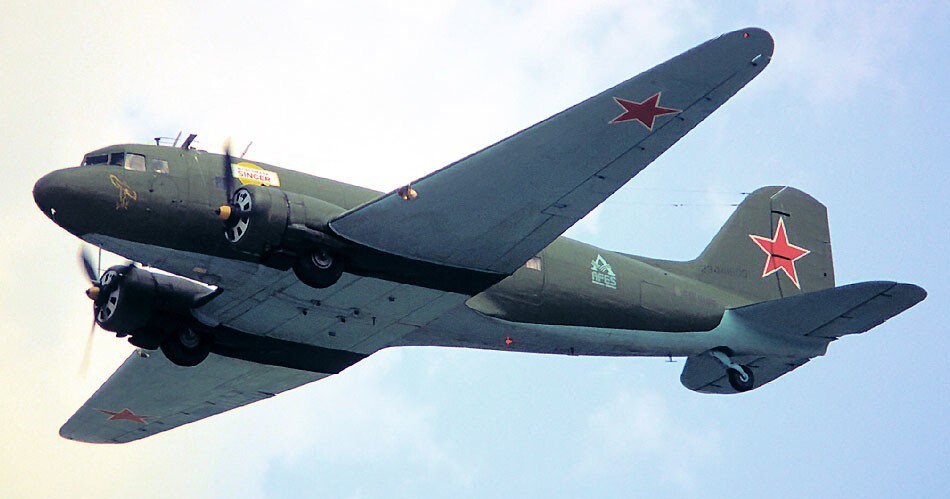
Unlike Li-2 S-47 standard defensive weapons didn't have. This was typical of all American transport aircraft. Cases of Americans installing machine guns on the S-47 are very rare, usually they did not put and have us. But the Americans worked, as a rule, in conditions its dominance in the air. We have, if necessary, to act in frontal zone and, especially over the territory of the enemy, the absence weapons became a significant drawback. Known cases installation on the S-47 of the upper turret UTK-1 with a UBT machine gun modeled on the Li-2. There were even cars with an additional pair of ShKAS machine guns in the rear windows. cabins. 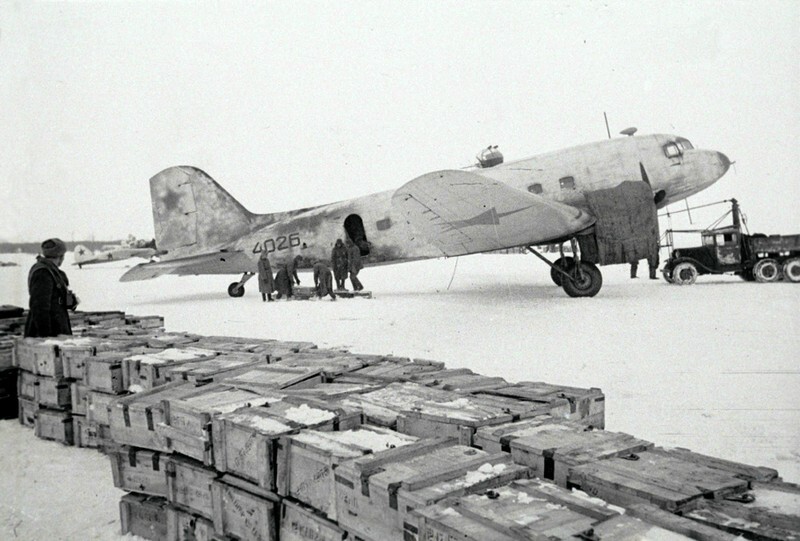
And further. Collective farm slaves, to whom Stalin did not give passports, did not allowed to travel to the cities (who worked interestingly at the Great construction sites communism in this case?), which the damned Bolsheviks kept on position of slaves, somehow managed to buy with their money such aircraft. 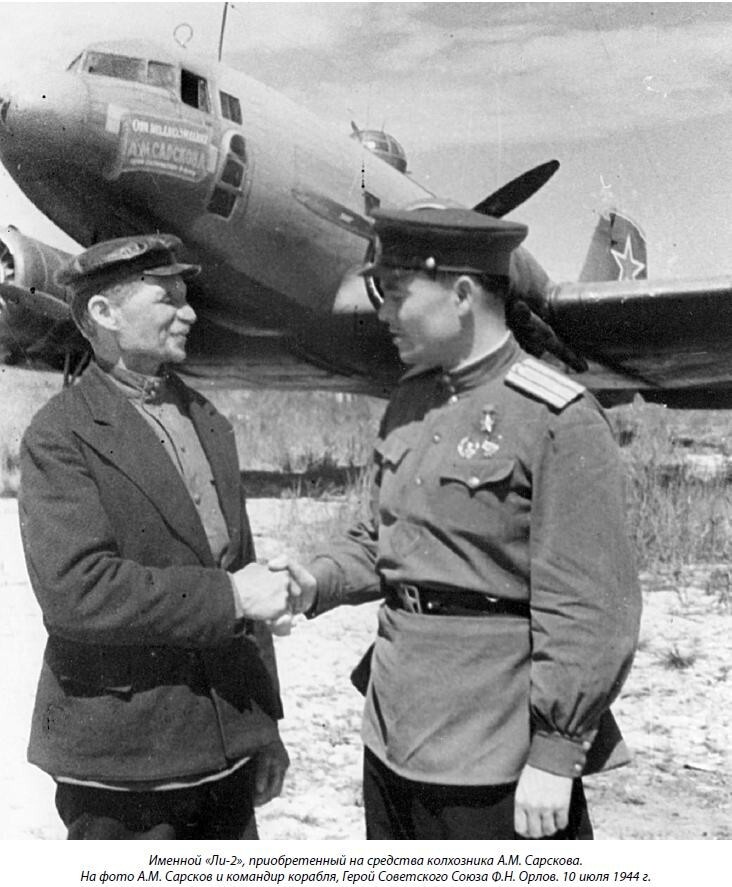
In the Civil Aviation of the USSR 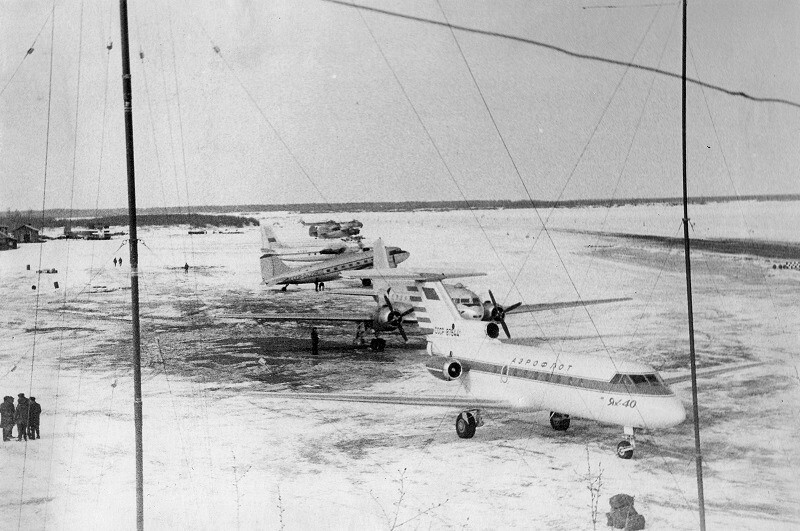
"Comrade brigade commander! It will burn me! I can't wait any longer!" 
Thank you for your attention.
